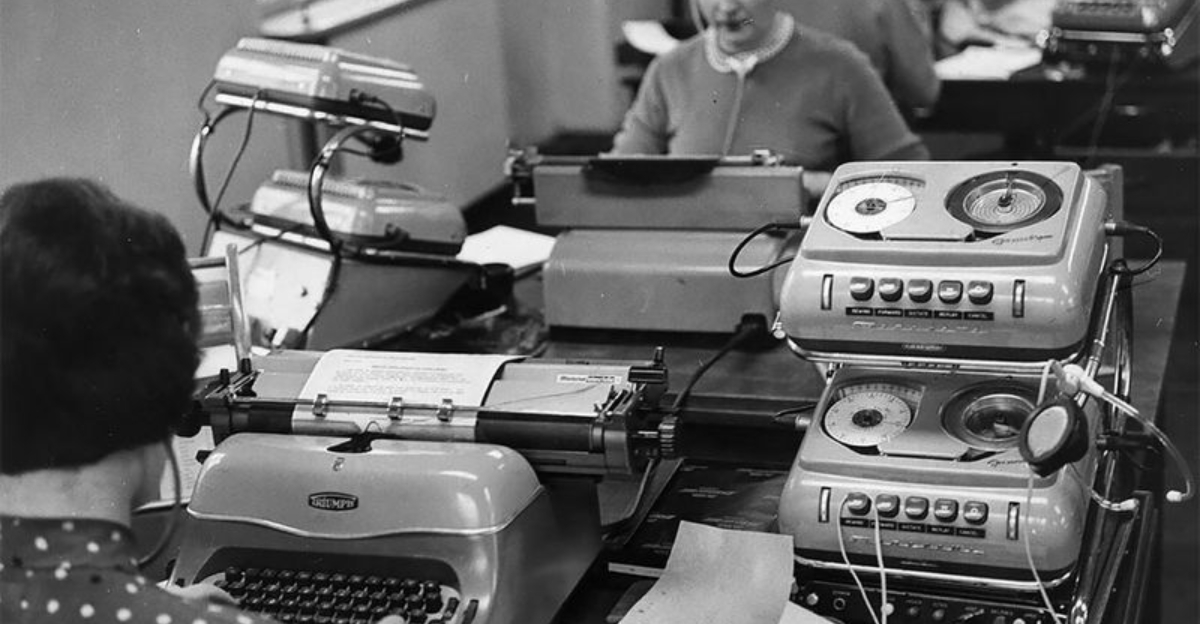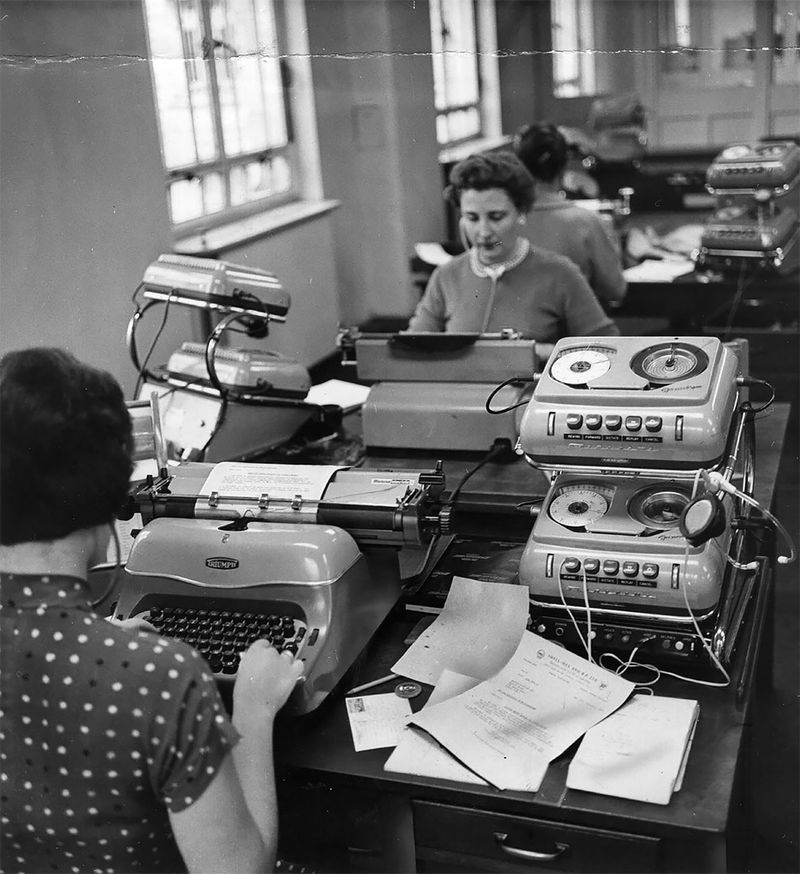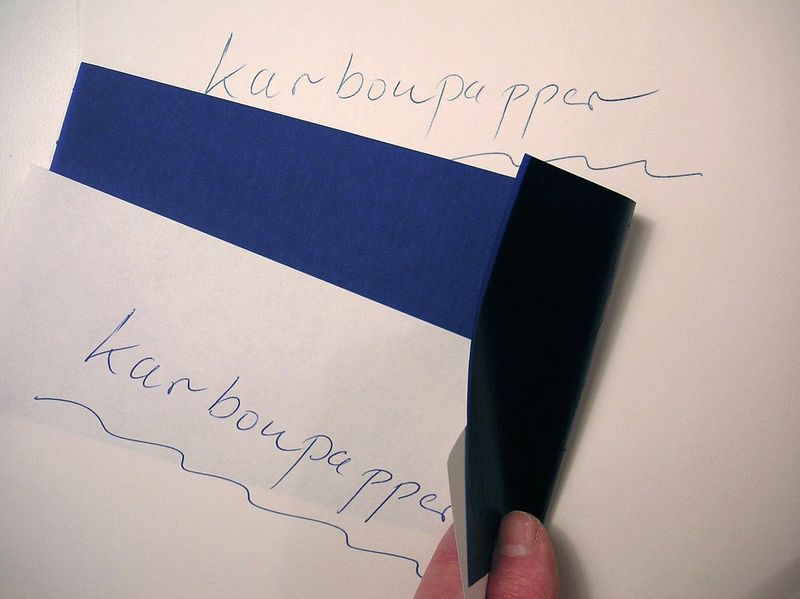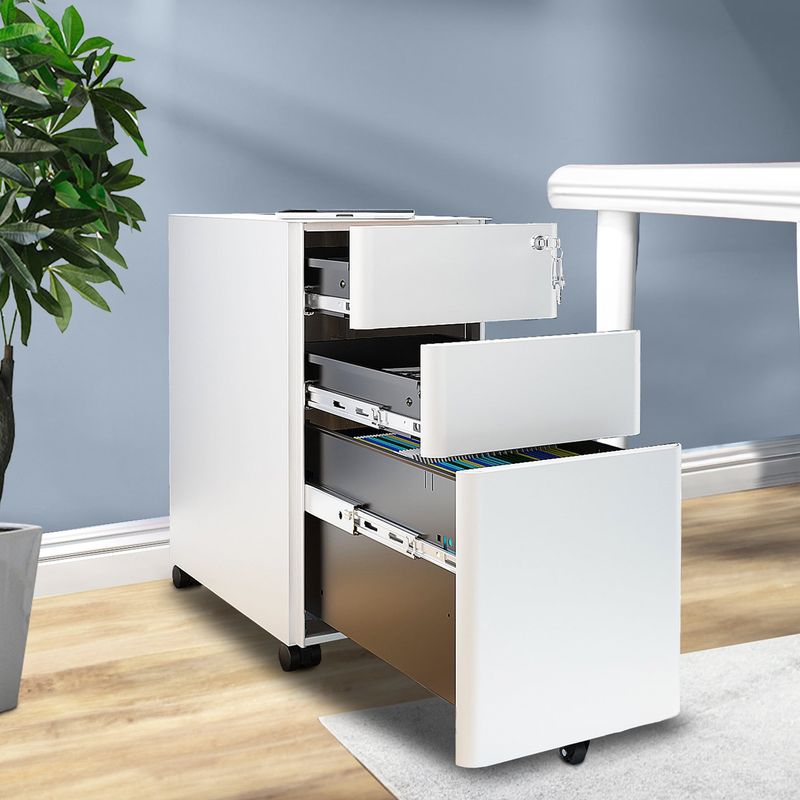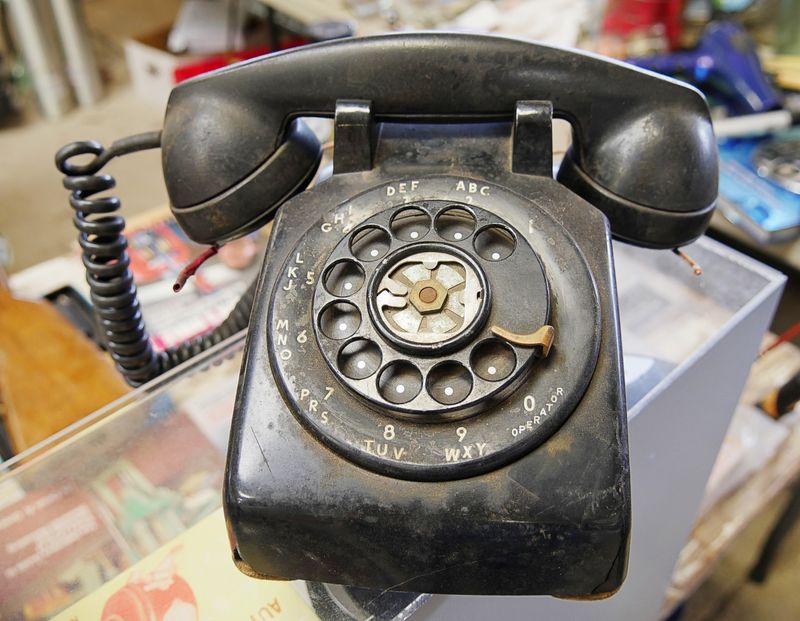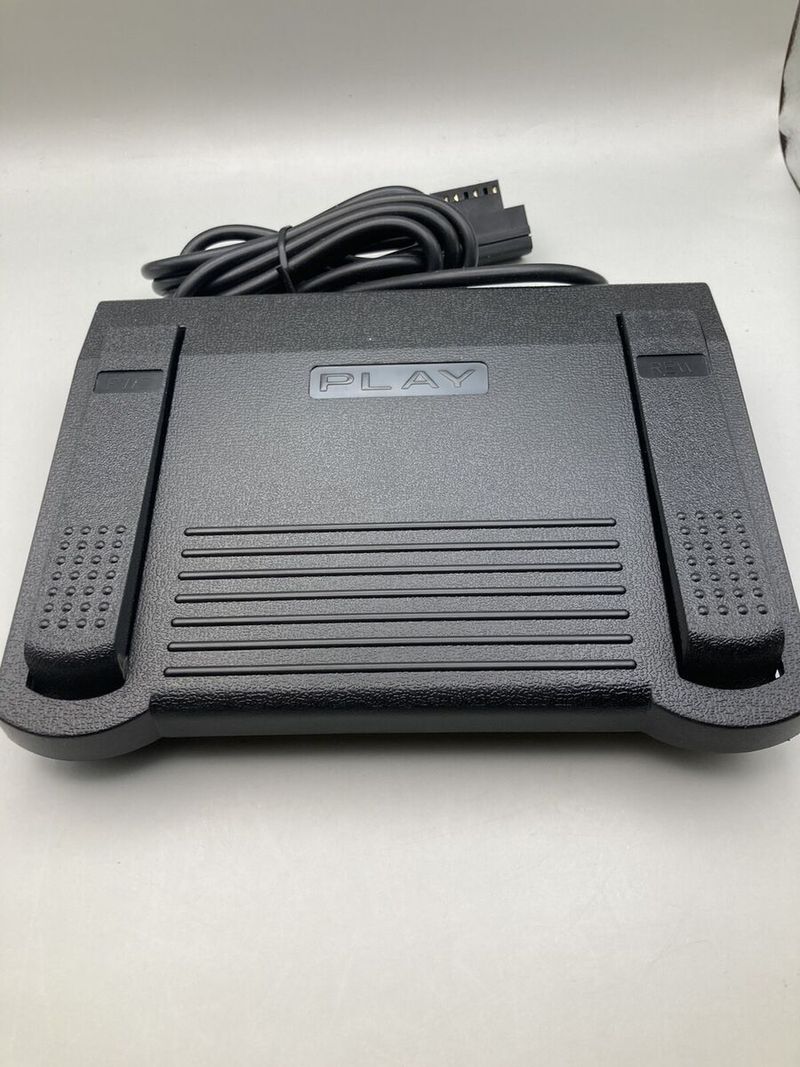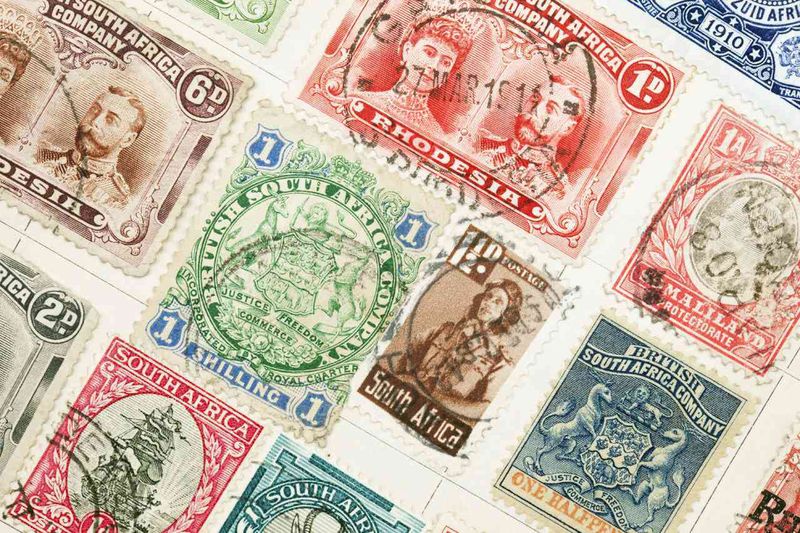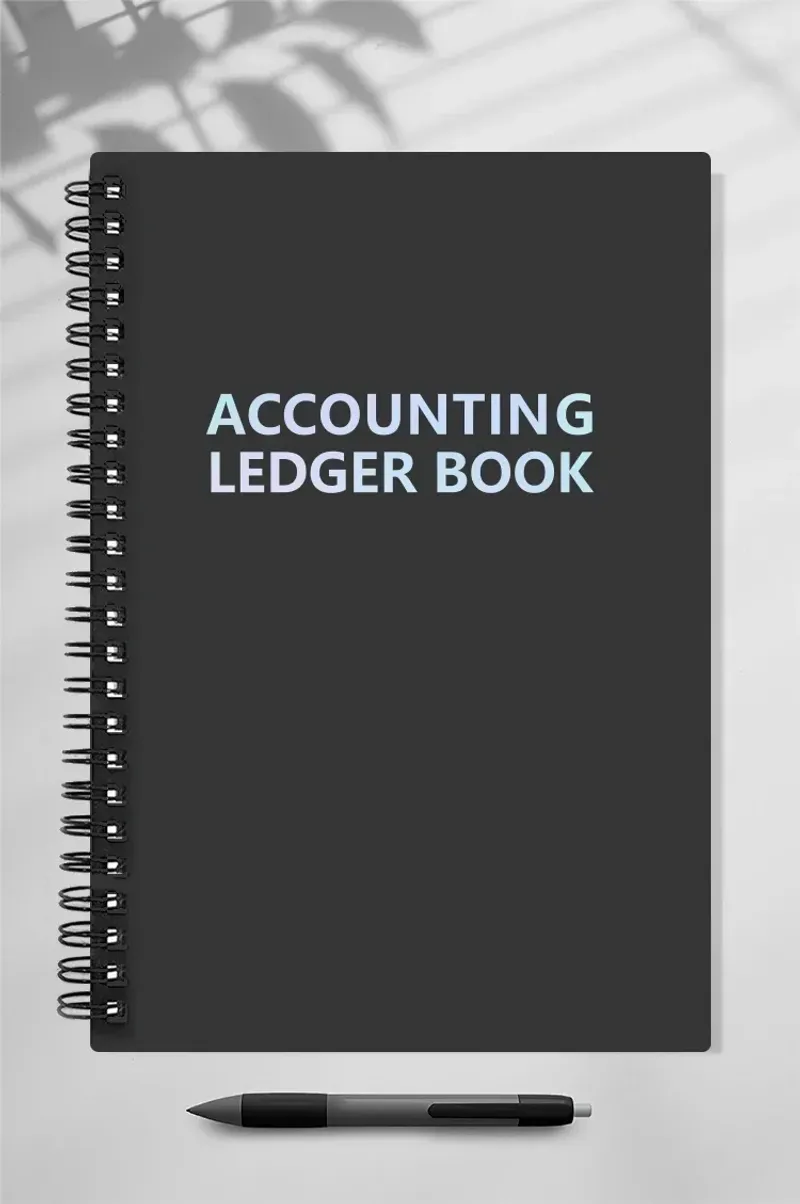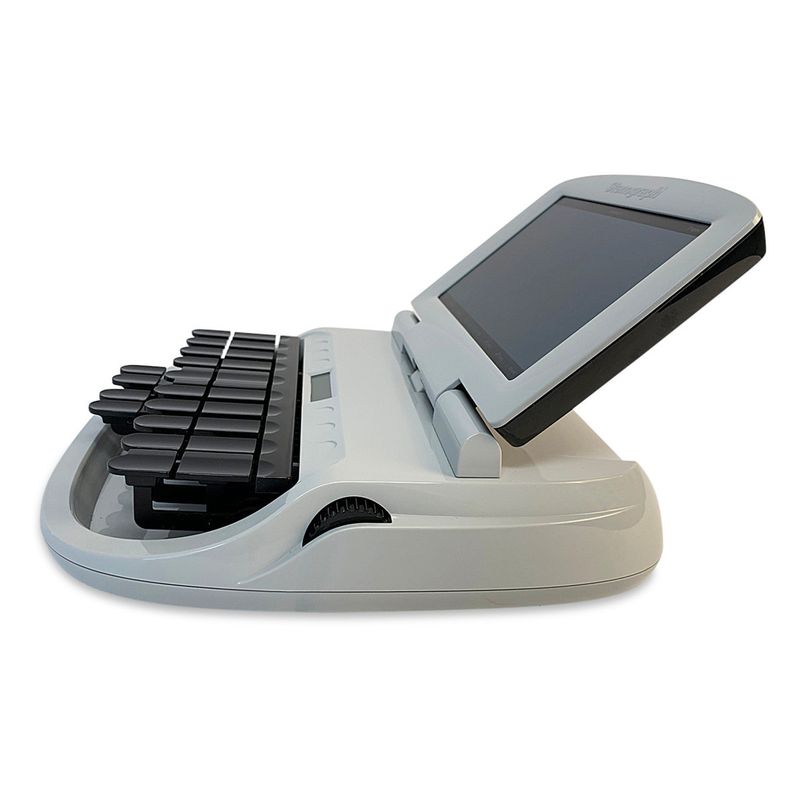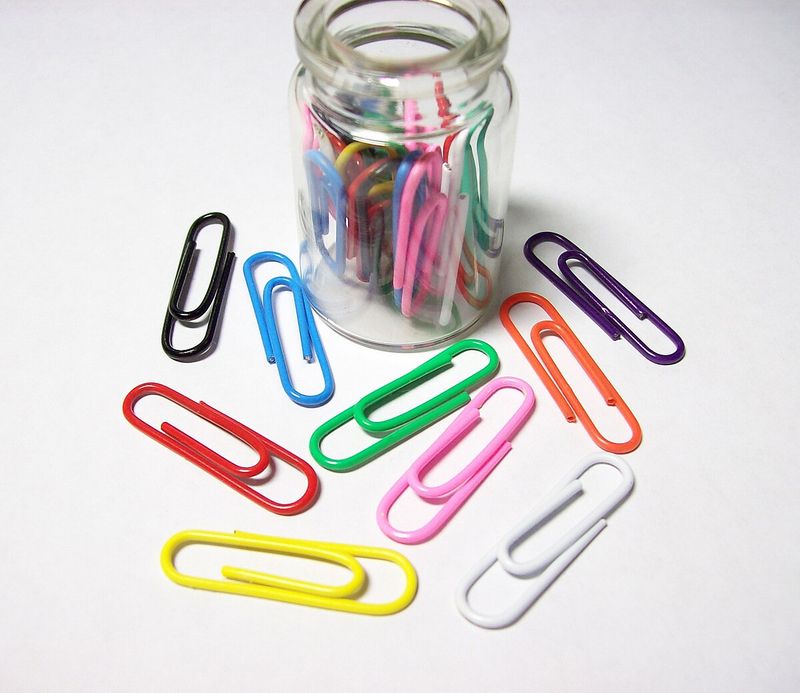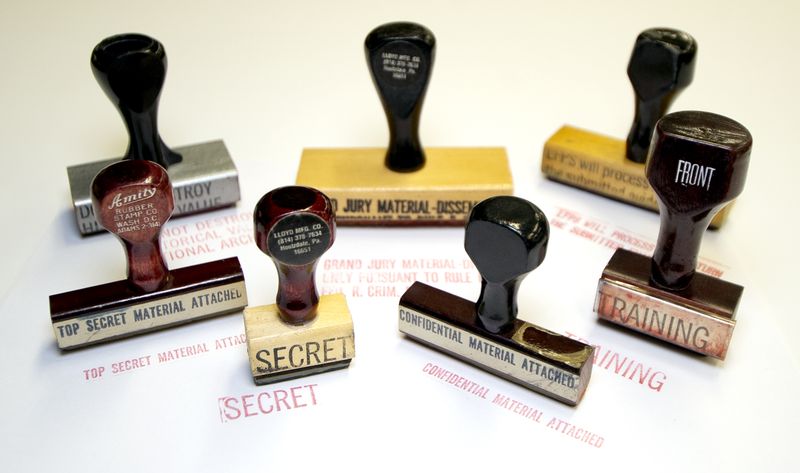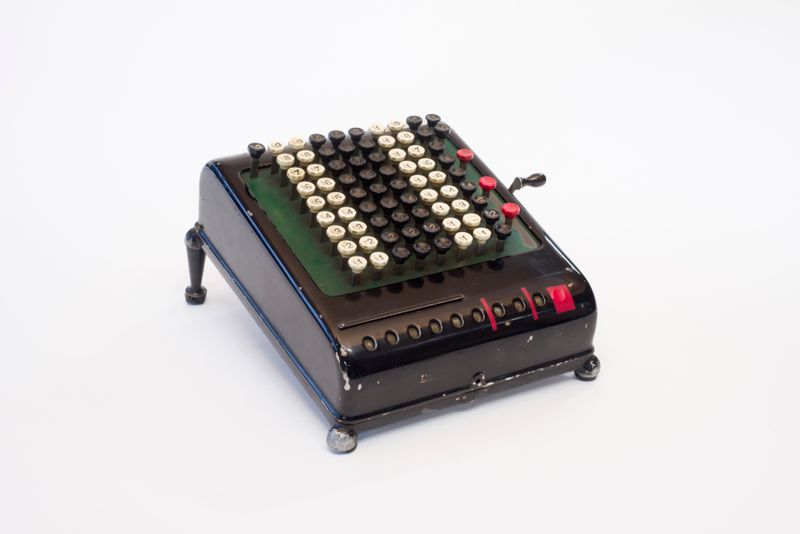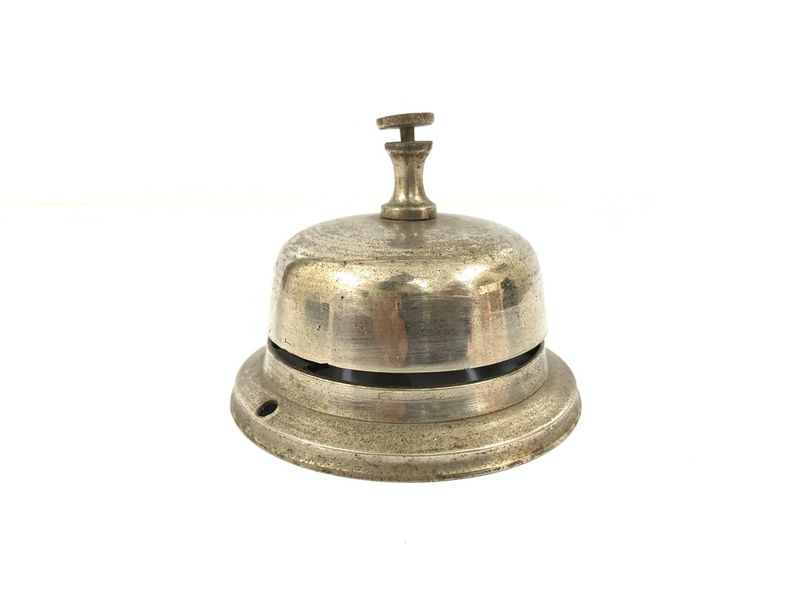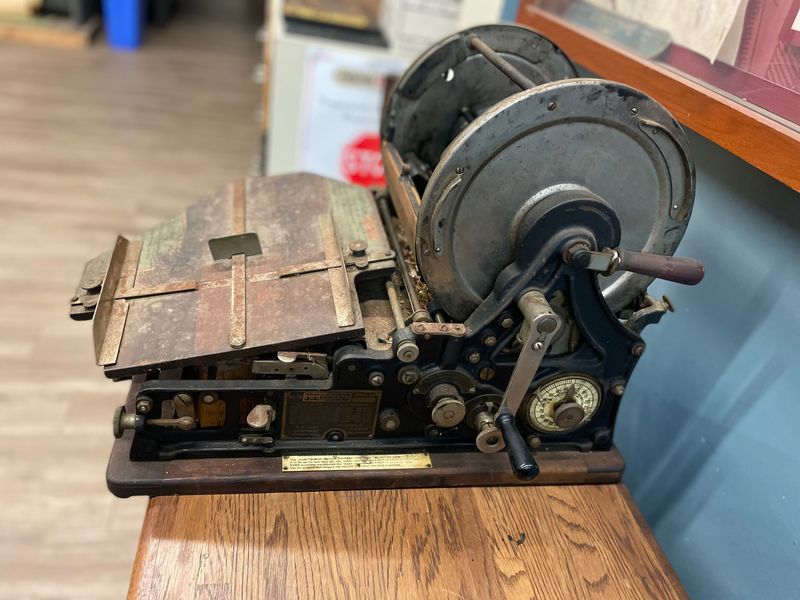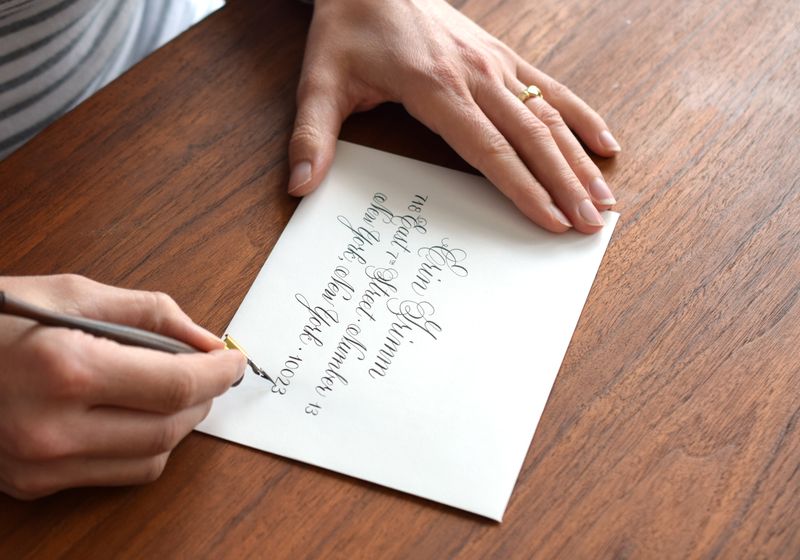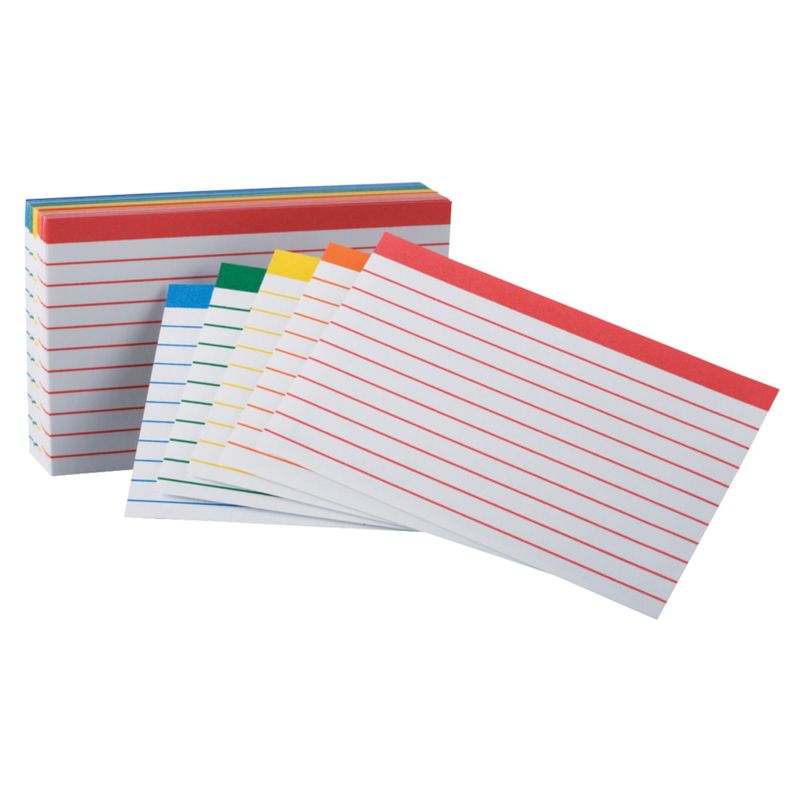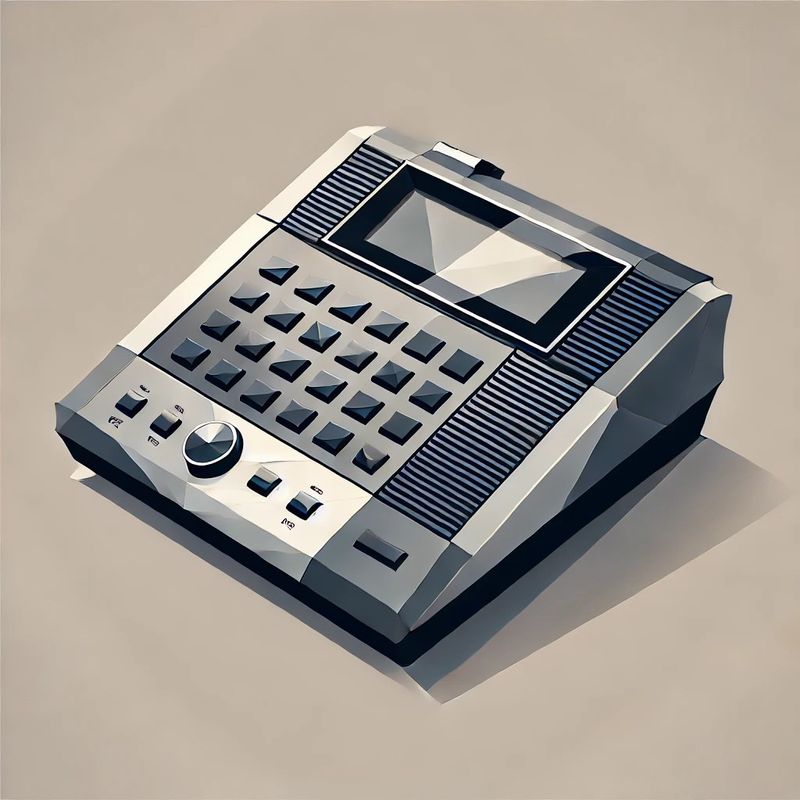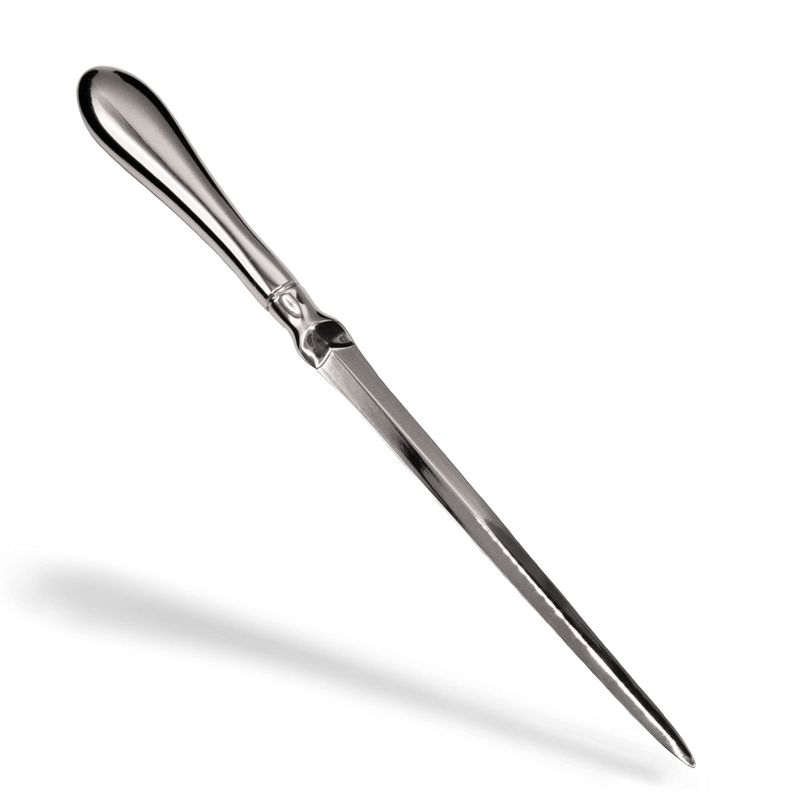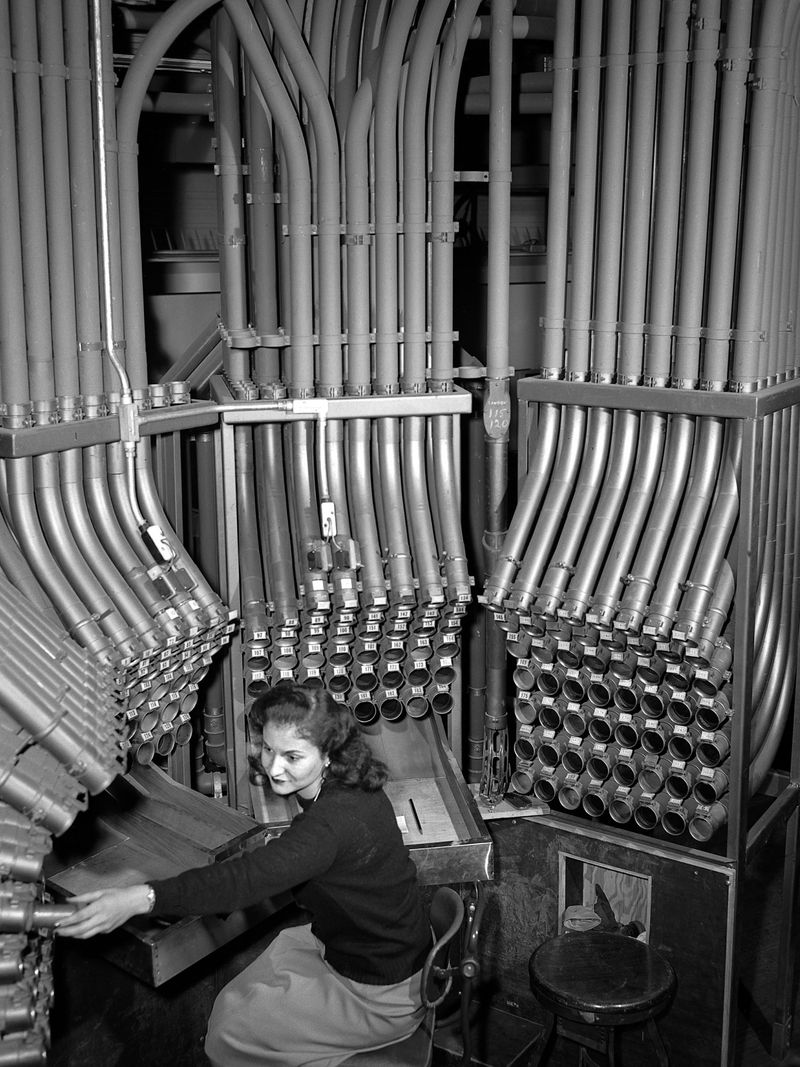Before computers revolutionized office work, a variety of tools and methods played a pivotal role in facilitating daily tasks.
Typewriters clacked away, creating crisp documents, while dictaphones captured spoken words for transcription.
These instruments, though simple by today’s standards, shaped the rhythm of the workplace, reflecting a blend of innovation and manual effort that defined office life in a pre-digital era.
1. Typewriters
Typewriters were the backbone of office communication. Each keystroke required precision, demanding dexterity and focus. These machines transformed handwriting into legible print, ensuring clarity in documentation.
Office workers often became adept at typing without looking, relying on muscle memory. The clack of keys was a familiar office soundtrack, echoing through hallways. This skill was prized, and efficiency was measured by words per minute.
Though cumbersome, typewriters brought a sense of accomplishment. Mistakes, however, required correction tapes or starting afresh, adding an element of meticulousness to the task.
2. Carbon Copies
Carbon copies allowed for duplicate records without photocopiers. By placing carbon paper between sheets, workers could create multiple copies of a document. This method was essential for maintaining records and sharing information.
The process required careful alignment to avoid smudges or misprints. Handling carbon paper was messy, often leaving fingers stained with ink. Despite this, it was a cost-effective solution for document replication.
Carbon copies ensured essential information was accessible to various departments, facilitating communication and record-keeping across an organization.
3. Filing Cabinets
Filing cabinets were the heart of information storage. These metal behemoths housed vital documents, organized meticulously in folders. Workers developed systems to categorize and retrieve files efficiently.
The clatter of opening and closing drawers was a constant in offices, a testament to the ongoing battle against paperwork. Each drawer represented a different department or category, ensuring quick access to needed files.
While digital storage has replaced it, the filing cabinet era taught organizational skills and the importance of a well-maintained archive.
4. Rotary Phones
Rotary phones were the communication lifeline in offices. Each call required dialing numbers in sequence, a tactile experience that demanded patience. These phones connected people across distances, facilitating seamless communication.
Conversations were often brief and to the point, as phone lines were shared resources. The sound of a rotary dial returning to position was common, a rhythmic office melody.
Despite being replaced by modern devices, rotary phones represent an era where every call was intentional and valued.
5. Dictaphones
Dictaphones were revolutionary for capturing spoken words. Executives would dictate memos or letters, which secretaries transcribed. This device transformed speech into written communication, expediting workflow.
The dictaphone allowed for multitasking, as one could record thoughts without needing to write. Secretaries became adept at deciphering recorded speech, honing their listening skills.
Though now replaced by digital recorders, dictaphones were invaluable in preserving accuracy and speed in conveying information within an organization.
6. Postage Stamps
Postage stamps were essential for outbound communication. Offices maintained stocks to facilitate correspondence with clients and partners. Stamping envelopes was a routine task, ensuring documents reached their destination.
The choice of stamp could reflect a company’s image, adding a personal touch to letters. Efficient mail handling ensured timely delivery, a critical aspect of business operations.
Though email dominates today, the postage era fostered attention to detail and the art of correspondence, where every letter was crafted with care.
7. Ledger Books
Ledger books were essential for financial record-keeping. These bulky books housed meticulous entries, tracking every transaction. Accountants relied on these records to maintain financial transparency.
Entries were made with fountain pens, requiring precise handwriting. Errors could mean recalculating entire pages, emphasizing accuracy. These books were often bound in leather, a symbol of their importance.
While spreadsheets have taken over, ledger books instilled a discipline in accounting, ensuring every penny was accounted for.
8. Stenography
Stenographers were vital for recording meetings and court proceedings. Using shorthand machines, they captured conversations verbatim. This skill required immense focus and agility, translating speech into shorthand symbols.
Their work was crucial for maintaining accurate records, ensuring nothing was lost in translation. Stenographers often worked in high-pressure environments, where speed was essential.
Although digital transcription tools have emerged, the era of stenography emphasized concentration and precision in documentation.
9. Paper Clips
Paper clips were simple yet indispensable. They provided a temporary binding solution for documents, keeping related papers together. This small invention saved time and effort in organizing paperwork.
The clinking sound of a jar of paper clips was familiar in offices, a testament to their ubiquity. Workers often personalized their clips, adding a touch of personality to their organization.
While today we rely more on digital files, paper clips remind us of the tactile nature of office work and the importance of staying organized.
10. Ink Pens
Ink pens, particularly fountain pens, were a staple in offices. They offered a smooth writing experience, making them a favorite for signing important documents. Mastery over penmanship was crucial as handwriting reflected professionalism.
Ink pots required careful handling, as spills could ruin documents. Writing with fountain pens was an art, demanding precision and flair.
These pens, now often replaced by ballpoints or digital signatures, symbolize an era where written communication was personal and deliberate.
11. Chalkboards
Chalkboards were used for brainstorming and presentations. They served as a visual aid, helping teams illustrate ideas quickly. The tactile experience of writing on a chalkboard fostered creativity in problem-solving.
Erasing and rewriting was part of the process, encouraging flexibility in thinking. These boards were central to meetings, where everyone could contribute visually.
Today, digital whiteboards have taken over, but chalkboards remind us of an era when ideas were shared with chalk dust on hands and sleeves.
12. Rubber Stamps
Rubber stamps expedited document processing. Offices used them to mark approvals, dates, or signatures, saving time in repetitive tasks. Each stamp had a specific purpose, reducing manual writing.
Stamping was a satisfying task, leaving a clear imprint on paper. These tools were essential for maintaining consistency across documents.
While digital solutions now prevail, rubber stamps were symbols of efficiency and reliability in an era of manual processing.
13. Envelopes
Envelopes protected documents during transit. Addressing and sealing them was a daily task, ensuring correspondence reached recipients securely. This process required attention to detail and an understanding of postal regulations.
The choice of envelope, from size to texture, could reflect the sender’s professionalism. Workers often perfected the art of folding letters to fit snugly.
Though email dominates now, envelopes remind us of a time when communication was tangible and personal, with each message carefully prepared.
14. Mechanical Calculators
Mechanical calculators were crucial for computations. Accountants relied on these devices to perform complex calculations, ensuring accuracy in financial statements. Unlike digital calculators, these were manually operated, requiring physical effort.
The clicking sound of gears was common, marking the progress of calculations. Despite their bulk, these machines were prized for their precision.
While spreadsheets and digital calculators have taken over, mechanical calculators represent an era where calculation was a skill demanding both mental and physical agility.
15. Office Bells
Office bells were used for attention. Placed at reception desks, ringing them signaled a visitor’s arrival. This practice ensured prompt service, with employees ready to assist.
Bells were also used to summon staff for meetings, their sound echoing through corridors. This simple tool contributed to smooth office operations, facilitating communication before electronic systems.
While now replaced by intercoms and digital alerts, office bells evoke nostalgia for an era of direct, personal interaction.
16. Mimeograph Machines
Mimeograph machines duplicated documents efficiently. By creating stencils, offices could produce multiple copies quickly. This was vital for distributing memos and announcements.
The process involved manual operation, turning a crank to transfer ink. Despite being messy, it was faster than hand-copying. The distinct smell of duplicating fluid was a hallmark of mimeograph use.
Today, printers have replaced them, but mimeographs remind us of inventive solutions for mass communication in pre-digital offices.
17. Push Pins
Push pins were essential for organizing visual displays. They secured notes, memos, and schedules on corkboards, creating a central information hub. This simple tool helped maintain office order and accessibility.
Employees used push pins creatively, arranging displays for maximum efficiency. The act of pinning notes was satisfying, providing a sense of accomplishment and organization.
Though digital boards are now common, push pins symbolize the tactile nature of planning and communication in traditional offices.
18. Calligraphers
Calligraphers added elegance to official documents. Skilled in the art of beautiful writing, they crafted certificates, invitations, and important letters. Their work elevated ordinary documents to artistic masterpieces.
Each stroke required precision and patience, reflecting dedication to their craft. Calligraphers understood the power of presentation, where form complemented content.
While digital fonts are prevalent now, calligraphy reminds us of a time when personal touch and artistry were integral to communication.
19. Index Cards
Index cards were vital for data organization. These small cards held key information, easily sorted and referenced. They were used for contact details, project outlines, and research notes.
Offices relied on index cards for quick access to information, often arranged in boxes or Rolodex systems. This method facilitated efficient data retrieval and management.
Though databases have replaced them, index cards symbolize a hands-on approach to information management, emphasizing simplicity and accessibility.
20. Sealing Wax
Sealing wax was used to secure and authenticate documents. By melting the wax and imprinting a seal, offices ensured the confidentiality of correspondence. This practice added a layer of security and formality.
The act of sealing was ceremonial, reflecting the importance of the enclosed content. Recipients appreciated the personal touch and integrity this method conveyed.
While digital encryption now prevails, sealing wax reminds us of the tangible methods used to protect sensitive information.
21. Office Bulletin Boards
Office bulletin boards centralized communication. They displayed announcements, schedules, and reminders, accessible to all employees. This tool was essential for keeping everyone informed and engaged.
Updating bulletin boards was a regular task, requiring attention to relevance and clarity. Employees often gathered around them to stay updated on company news.
Though digital platforms now dominate, bulletin boards symbolize a shared space for information exchange, fostering community in traditional offices.
22. Dictation Machines
Dictation machines streamlined the documentation process. Executives used them to record ideas, which secretaries transcribed. This tool facilitated efficient information capture and sharing.
The ability to record thoughts on-the-go was invaluable, allowing for multitasking. Secretaries developed proficiency in transcribing recordings accurately.
While digital recorders now exist, dictation machines highlight an era where capturing spoken words required dedicated tools and skills.
23. Inkwells
Inkwells held ink for pens before cartridges existed. They were a common sight on desks, providing a constant ink supply for writing. This setup encouraged deliberate and careful penmanship.
Inkwells required regular refilling and cleaning to prevent clogs. The process of dipping a pen added a rhythmic pause to writing, fostering reflection before each stroke.
Though modern pens have made them obsolete, inkwells remind us of a bygone era where writing was a deliberate, thoughtful act.
24. Letter Openers
Letter openers were tools of elegance and utility. They made opening mail a graceful task, preventing tearing of important documents. This small instrument was a staple on desks, reflecting an appreciation for detail.
The act of opening a letter was ceremonial, adding anticipation to the communication process. A well-designed opener often became a cherished possession.
Though email has reduced their use, letter openers symbolize a time when receiving and opening mail was an event to be savored.
25. Office Lobbies
Office lobbies were the face of businesses. They set the tone for visitors, blending functionality with aesthetics. A welcoming lobby conveyed professionalism and attention to detail.
Receptionists managed visitor flow, ensuring timely appointments. The design often reflected company values, with artwork or accolades on display.
While virtual meetings are now common, lobbies remind us of the importance of first impressions and the role of physical space in business interactions.
26. Pneumatic Tubes
Pneumatic tubes enabled quick document transfer. Offices used these tubes to send paperwork between departments, reducing physical movement. This system improved efficiency in large buildings.
Employees placed documents in capsules, which were whisked away to their destination. The sound of a capsule arriving was a familiar office noise.
While email and electronic sharing have replaced them, pneumatic tubes highlight innovative solutions for internal communication before digitalization.
